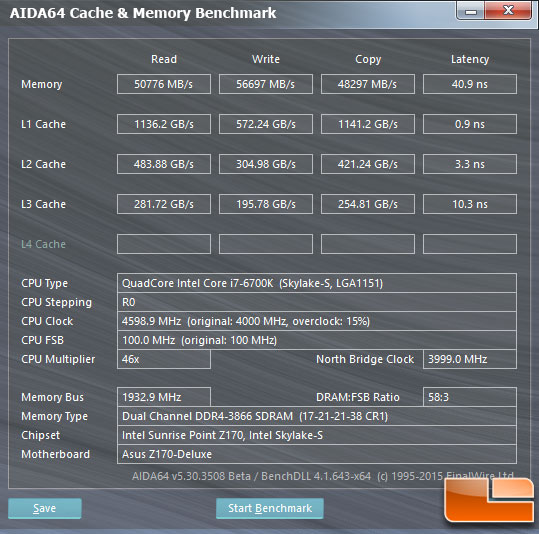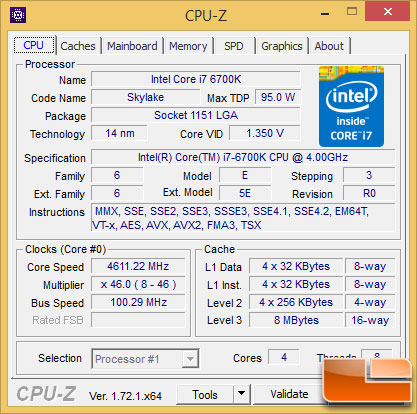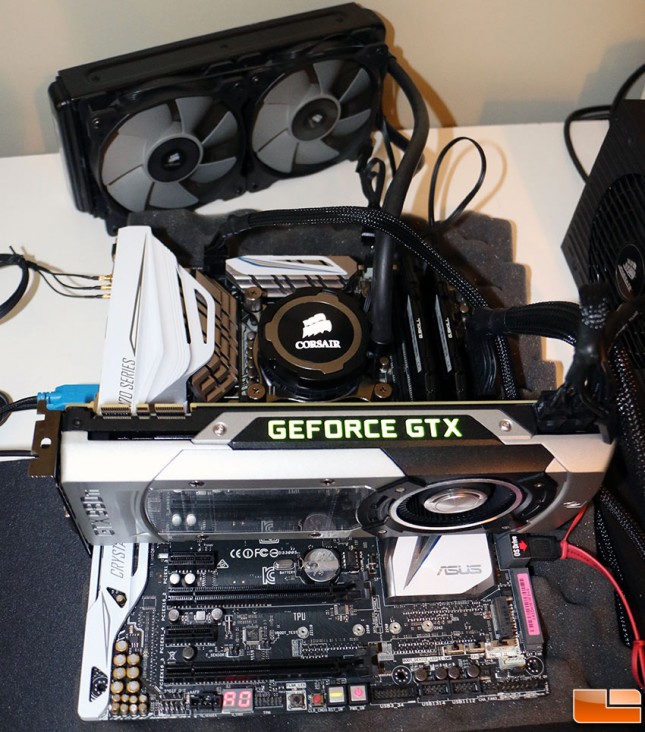DDR4 Memory Scaling on Intel Z170 – Finding The Best DDR4 Memory Kit Speed
DDR4 Memory Frequency Impact on Intel Z170 and Skylake
Now weve reached the meat and potatoes of this memory scaling which we’ll be showing you our test results from the benchmarks we selected to test with. The benchmarks that made the cut were AIDA64, 3DMark 11 Sky Diver Physics Test, Handbrake, Metro Last Light and Grand Theft Auto V. We feel these benchmarks should give a fairly good look at how the memory subsystem on Skylake’s new Z170 platform performs with some game titles as well as video encoding and of course memory bandwidth tests. There are hundreds of DDR4 dual-channel memory kits on the market and many don’t know what kit to buy, so we tested as many DDR4 clock rates that we could and ended up benchmarking our Skylake-based platform with memory clock speeds from DDR4-2133 all the way up to DDR4-3866 using the same exact kit of memory set to 1.35V!
We tried our best to use the most popular clock speeds and timings for each clock rate. Heres the full list of our memory configuration we used for benchmarking:
- DDR4-2133 – 14-14-14-32 1T
- DDR4-2400 – 15-15-15-32 1T
- DDR4-2666 – 15-15-15-32 1T
- DDR4-2800 – 15-15-15-32 1T
- DDR4-3000 – 15-15-15-32 1T
- DDR4-3200 – 16-16-16-35 1T
- DDR4-3466 – 16-18-18-38 1T
- DDR4-3600 – 17-18-18-38 1T
- DDR4-3733 – 17-19-19-38 1T
- DDR4-3866 – 17-21-21-38 1T (not fully stable, but AIDA64 results included)
We overclocked our Intel Core i7-6700K Skylake quad-core processor to 4.6GHz (46 x 100MHz) on our test bed and only adjusted the memory divider and never touched the baseclock speed on our processor. This will help ensure that any performance differences we see are due to the memory subsystem and not the overall clock frequency of our processor.
Rather than just running each benchmark or application once, we took the average from running each test scenario five times. This means that we ran 25 benchmarks for each memory clock speed we tested at and there were nine clock speeds tested. All told we ran 225 benchmarks over a three day span this week to get the numbers that went into these charts.
Before we look at the numbers, let’s take a really quick look at the test system. All testing was done on a fresh install of Windows 8.1 Pro 64-bit and benchmarks were completed on the desktop with no other software programs running. We will use an NVIDIA GeForce GTX 980 Ti reference card for discrete gaming performance tests.
The Intel Z170 platform that we used to test the the G.Skill Ripjaws V memory kit was running the ASUS Z170 Deluxe motherboard with BIOS 0603 that came out on 07/30/2015. The Corsair Neutron GTX 240GB SSD uses 19nm NAND and was using M311 firmware.



